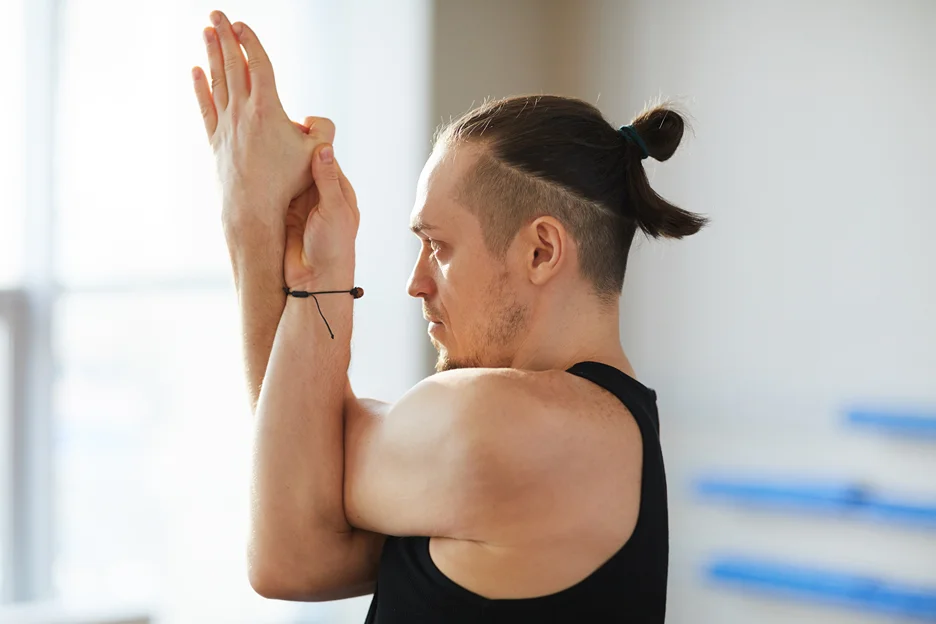Relieve Neck and Shoulder Pain with Simple Stretches
If you’re one of the many people suffering from chronic neck and shoulder pain, you know how debilitating it can be. The constant aches and stiffness can make it difficult to focus during the day and sleep at night.
While pain medication and physical therapy have their place in treatment, practicing simple stretches is an easy and effective way to find relief. Read on to learn what causes neck and shoulder pain, and how certain stretches can help alleviate it.
What Causes Neck and Shoulder Pain?
Neck and shoulder pain often stems from tense muscles in the upper back and neck area. Prolonged periods of poor posture put a strain on the cervical spine and surrounding muscle tissues.
Shoulder pain can also result from overuse injuries to the rotator cuff muscles caused by repetitive motions. Other sources of neck and shoulder pain include:
- Herniated discs or bone spurs in the cervical spine putting pressure on nerves
- Arthritis in the neck joints
- Pinched nerves in the neck or shoulders
- Muscle knots or trigger points in the trapezius, levator scapulae, and rhomboids
Symptoms of Neck and Shoulder Pain
Common symptoms associated with neck and shoulder pain include:
- Aching, throbbing, or stabbing pain in the neck, upper back, and shoulders
- Stiffness and reduced range of motion when turning the head
- Headaches originating at the base of the skull
- Pain or numbness radiating down the arms and fingers
- Muscle spasms in the neck and shoulders
- Grinding or popping sounds when moving the neck
If you experience any of these symptoms, beginning a targeted stretching routine can help alleviate the discomfort. Always consult a doctor for severe pain or pain that persists longer than 2 weeks.
12 Simple Stretches to Relieve Neck and Shoulder Pain

Performing the following 12 stretches gently and regularly can improve flexibility and range of motion in the neck and shoulders. Hold each stretch for 20-30 seconds, breathing deeply into tightened muscles to encourage release. Repeat each exercise routine 2-3 times for maximum benefit.
1. Chin Tuck
The chin tuck stretch involves sitting or standing with shoulders relaxed and eyes looking forward. Gently tuck the chin in towards the chest, holding the stretch gently. This should produce a feeling of stretch in the back of the neck and into the upper back.
2. Neck Rotation
For the neck rotation stretch, begin by sitting or standing with good upper body posture. Slowly turn the head towards the right shoulder, holding the stretch position. Return the head to the center, and then repeat the same stretch towards the left shoulder.
3. Levator Scapulae Stretch
To do the levator scapulae stretch, sit or stand tall with shoulders down. Gently tilt the head to the right, bringing the right ear in towards the right shoulder. For a deeper stretch, place the right hand on the side of the head.
4. Upper Trapezius Stretch
The upper trapezius stretch involves sitting with the left hand placed on the left knee, and the right arm held straight out to the side. Use the left hand to gently pull the right arm across the body, feeling a stretch in the upper back and shoulders.
5. Arm Circles
For arm circles, stand with arms extended straight out to the sides, parallel to the floor. Make small, controlled circles with both arms moving forwards and then backwards.
6. Shoulder Rolls
Shoulder rolls begin by sitting or standing tall with arms relaxed at the sides. Lift the shoulders up towards the ears, rolling them backwards and down the back.
7. Shoulder Blade Squeeze
The shoulder blade squeeze involves sitting or standing with arms relaxed and shoulders down. Draw the shoulders back, squeezing the shoulder blades together.
8. Chest Stretch
To do the chest stretch, stand in a doorway with the elbows bent and hands placed on the door frame. Step through the doorway, leaning the chest slightly forward to feel a stretch across the front of the shoulders and chest.
9. Neck Side Stretch
For the neck side stretch, sit or stand with proper upright posture first. Gently tilt the head toward the right shoulder. Use the right hand to apply light pressure on the head to deepen the stretch.
10. Chin to Chest
The chin to chest stretch starts by sitting or standing with shoulders relaxed. Look straight ahead, then gently lower the chin down towards the chest.
11. Eagle Arms
To do the eagle arms stretch, raise both arms to shoulder height and cross the right arm under the left. Bend the elbows, bringing the palms together with hands toward the chest.
12. Wrist Stretch
Finally, the wrist stretch involves extending the right arm straight out with the palm facing outwards. Use the left hand to gently pull the right hand’s fingers back towards you.
Perform Stretches Safely and Effectively
When starting a new stretching routine, begin slowly with gentle movements and only stretch to mild discomfort, not pain.
Relax muscles in the stretched position and breathe deeply. Avoid overstretching or bouncing which can cause injury. Maintain proper spinal alignment during all dynamic stretches.
Aim to stretch daily for optimal results, after warming up neck and shoulder muscles with light physical activity. Shoulder and neck stretches can be done anytime throughout the day to relieve tension from poor posture.
Consider setting reminders to take quick stretch breaks during prolonged sitting.
Combine Stretching with Other Treatments for Neck Pain Relief
While regularly performing neck and shoulder stretches can provide great relief, the most effective approach combines stretching with other therapies including:
- Strengthening neck exercises for the upper back and neck
- Massage therapy to release tight neck muscles and trigger points
- Posture training exercises and ergonomic adjustments
- Stress management and relaxation techniques
- Anti-inflammatory medication or pain relieving creams
- Heat and cold therapy for muscle spasms
- Visiting a physical therapist, chiropractor, or osteopath
Maintaining Good Posture and Body Mechanics
Practicing mindful posture throughout daily activities can prevent neck and shoulder pain from returning. Be aware of slouching when sitting at a desk or looking down at a phone. Reduce strain by bringing items closer to eye level.
Make ergonomic adjustments to your workstation, positioning your chair and desk at the proper heights. Limit carrying heavy bags on one shoulder which throws off balance. When lifting heavy objects, use proper form keeping your chest lifted and shoulder blades down.
Know When to See a Doctor
While gentle stretching can alleviate much neck and shoulder discomfort, seek medical care if you experience severe pain lasting over 2 weeks or pain that radiates down the arms or legs. Also see your doctor if pain is accompanied by numbness, tingling, dizziness, headaches, fever, or unexplained weight loss.
Start Stretching for Neck and Shoulder Pain Relief Today
If nagging neck and shoulder pain is making daily life difficult, try incorporating some of these simple and gentle stretches into your routine. Perform them gently and regularly for cumulative benefits over time.
Combine stretching with posture corrections, strengthening exercises, and other therapies for enhanced relief. Maintain proper ergonomics and body mechanics in your daily activities. With consistency, these steps can help get you back to pain-free mobility.
Find the Right Specialist for Your Neck and Shoulder Woes Using Kaly

Struggling with constant neck and shoulder pain? The right diagnosis leads to targeted treatment and real relief. Kaly connects you to top-rated local doctors and specialists for both virtual and in-office consultations.
Browse doctor profiles on Kaly.com to find someone experienced in treating neck and shoulder issues. Read verified patient reviews. Then easily book appointments online or via Kaly’s app.
With Kaly telehealth visits, you can have a video consultation with a doctor right from home to determine the next steps for your neck or shoulder pain. Partner with knowledgeable professionals through Kaly’s trusted network and finally find solutions to persistent pain.
